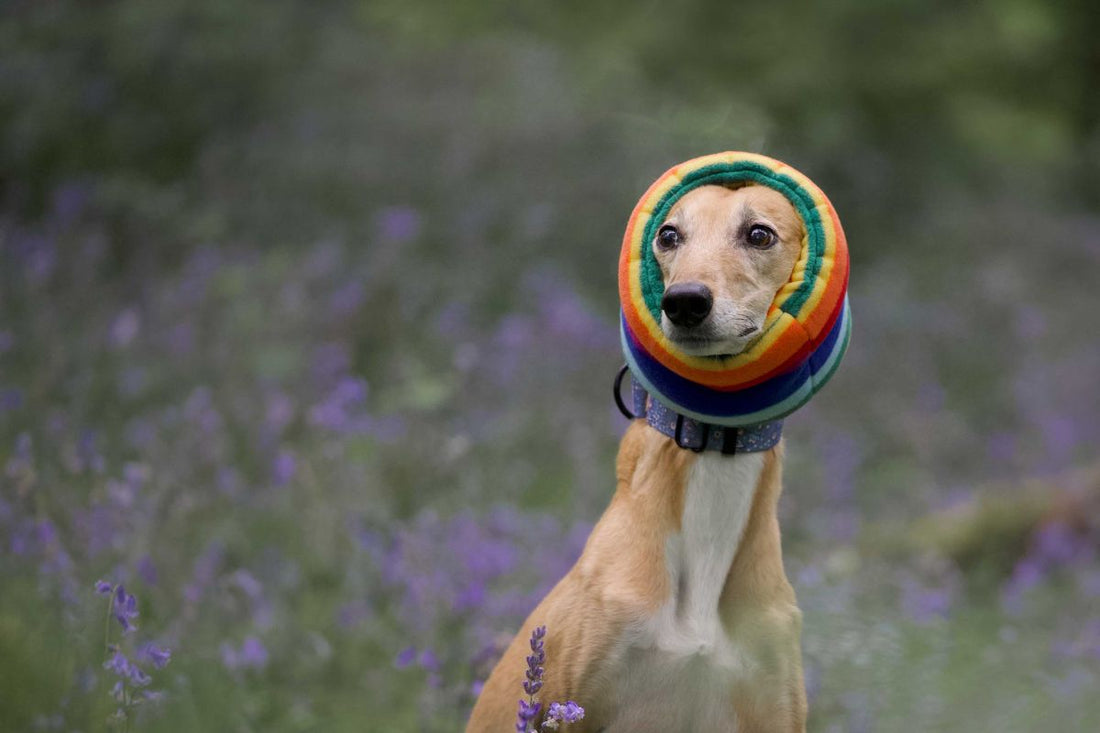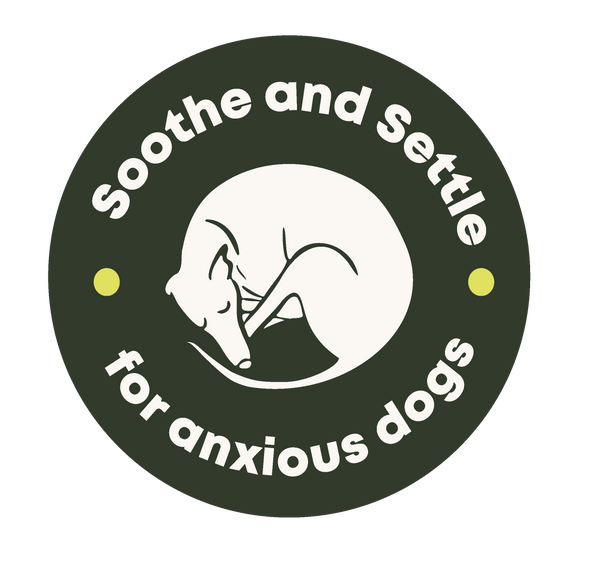
How to Walk a Nervous Dog
Share
When you first brought your pooch home, let’s face it, you were probably looking forward to all the walks! Walking your dog is a great way to bond, get exercise and give your dog the experiences they need to live their best life. That’s why it’s also really stressful when walks make your dog nervous or stop them wanting to go outside.
Let’s take a step back though. You’d be surprised how common anxiety is in dogs, with 72.5% reported to have at least one stress-related behaviour. This means you and your nervous dog are not alone and there are plenty of things you can do to help make walks calm and enjoyable for you both.
Here are six tips to help you walk a nervous dog:
1. Signs Your Dog Is Nervous on a Walk
You’ve been there before. You head out, all seems fine, then something happens and you have a stressed-out dog on the lead. As a pet parent, you’ll probably sense when your dog is anxious, but a few signs include:
- Reactivity
- Panting or shivering
- Barking or whining more than usual
- Freezing and refusing to move
- Pulling hard on the lead to get away
- A tucked tail or hiding behind you
2. Understand What Makes Your Dog Nervous
If you’re wondering, why is my dog so nervous on walks? Sometimes the most straightforward answer is in their past. This could include not getting enough socialisation as a puppy or a frightening experience or situation where they couldn’t escape.
Feeling nervous might also be a sign of illness or your dog being in pain, and sometimes it can come up as they age. If you’re worried about your dog’s anxiety, it’s always worth calling your vet to rule out any underlying issues and prescribe medication where needed.
You may also notice that your dog has particular triggers. On walks, triggers can be:
- Other dogs or people
- Big vehicles or busy traffic
- Other animals like squirrels and cats
Once you’ve spotted a trigger for your dog, you can understand that each trigger has a threshold. A threshold is how close your dog has to be to the trigger to start feeling anxious. Keeping your distance from the triggers that upset your dog can be a simple first step to helping them feel calm on walks.
3. How to Train a Nervous Dog to Walk
Just like with humans, the best way to help your dog get over their nervousness is with empathy and compassion. You aren’t going to ‘fix’ your dog and pushing them to walk in situations that make them nervous will only make your furry friend feel worse.
Help Your Dog Feel Safe at Home
While some advice out there will say not to walk your nervous dog, we don't recommend you stop walking. However, between walks, make sure your home is a space where your dog can rest and recover.
A microwaveable wheat bag can make your dog feel extra cosy and you can give your dog supplements like Dorwest Valerian Compound or Scullcap & Valerian Tablets to help soothe their anxiety. We’ve shared our advice on how to choose the right supplements for your dog here.

Keep Going with Walks
When you and your dog feel ready, gently give your dog some exposure to their trigger. Understanding their threshold will help to give your dog a safe experience without pushing them to react.
This might look like taking a dog who is scared of other dogs to the dog park. Without reaching their threshold, you can go to look at the dog park from outside and slowly get closer over time. As long as your dog feels relaxed and you don’t move too fast, you’ll be making progress.
Bringing treats or a favourite toy can help your dog build up positive associations around an old trigger. Like us, dogs are motivated to repeat behaviours that get rewarded.
Helping your dog keep calm on walks might require a little extra planning too, whether that’s changing your route, crossing the road to avoid another dog or walking at less busy times of day. Building up a routine will also help your dog feel safe.
Practice Obedience Skills
While out on your walks, you can support your dog by practicing obedience skills in a quiet area on your usual route. By helping your dog build confidence and learn your cues without distractions, they'll naturally be more likely to respond to you in busy areas.
‘Watch me’ is a particularly helpful cue to get your dog to make eye contact and distract them from any triggers.
Walk in a ‘Pack’
As long as your dog isn’t nervous around other dogs, walking in a pack with your friends’ calm, friendly dogs can make your dog feel more confident. If the other dog is new, walk both pets at a distance to begin so they can start to feel more comfortable around each other at their own pace.
How to Walk a Traffic Nervous Dog
If you find yourself needing to calm a nervous dog walking along a road, slowly building up exposure applies the same as with other triggers. Sudden noise is one of the most common triggers for dogs, so keeping a pair of dog earmuffs on hand can help to muffle the impact of sound (and they look pretty cute as well!)
4. How to Calm a Nervous Dog on a Walk
Of course, best-laid plans won’t always stop your dog meeting a trigger. If your dog is suddenly nervous on a walk, here are some simple steps you can take:
- Put yourself between your dog and the trigger.
- Move away from the trigger together, back to under your dog’s threshold.
- Stay calm and assertive to help your dog feel safe.
- Keep eye contact with your dog or ask them to ‘watch me’.
- Reward your dog when they begin to calm down.
- Don't give up on future walks - when you fall off a bike, it's best to get back on.
Fear in dogs can also lead to reactivity like lunging and barking. We’ve shared six tips to help you calm down a reactive dog.

Some nervous dogs will pull at the lead when triggered. If you're worried about your dog's collar slipping off, a Martingale collar can give you peace of mind.
5. What if I Get Nervous Walking My Dog?
Let’s get it out there, walking a nervous dog can be really stressful. If walks don’t feel fun anymore and you spend your time worrying about your dog slipping their leash or being reactive, take a deep breath. That you’re reading this shows you’re doing your best for your dog. You’re doing a great job.
One of the simplest ways to feel more confident when walking your dog is to invest in gear to help like a stylish anti-slip Martingale collar - here’s our guide to choosing a Martingale collar for your dog. It’s also worth making sure your dog’s identification tag and microchip are updated to give you extra peace of mind.
Lastly, don’t be afraid to ask for support. If your dog’s behaviours are causing you concern, enlisting a professional trainer can be a smart decision. They’ll be able to share techniques to help your dog feel more confident on your walk.
6. Can Nervous Dogs Ever Get Over Their Fear of Walking?
If your dog’s been struggling with anxiety, we hope this guide has given you useful tips on how to walk a nervous dog. The key message is to have patience and empathy for your dog, remaining calm so you can help them feel safe.
At Soothe and Settle, we’re here to help you help your dog and understand first-hand how helpless you can feel when your dog is distressed. That’s why we invented the hush muff to soothe your dog around loud noises. We also offer non-slip Martingale collars and supplements to soothe nervous dogs, as well as microwaveable wheat bags to help your dog feel safe at home.
For more helpful tips and advice on caring for your nervous dog, and to be part of our mission to help dogs everywhere feel safe, subscribe to our mailing list below.




